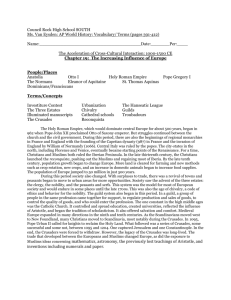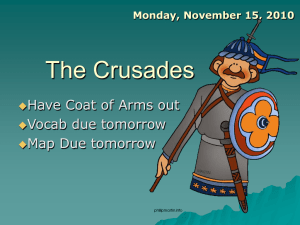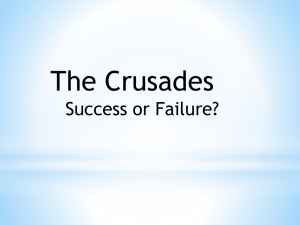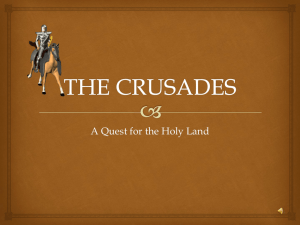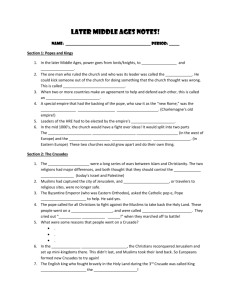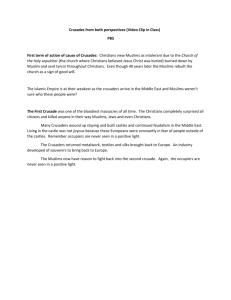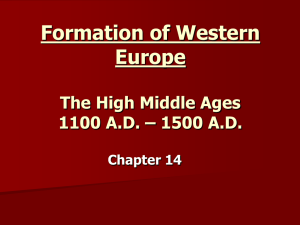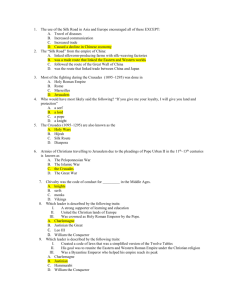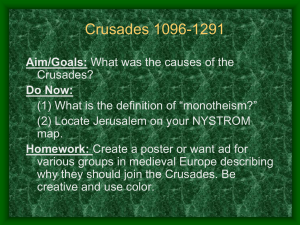THE CRUSADES
advertisement
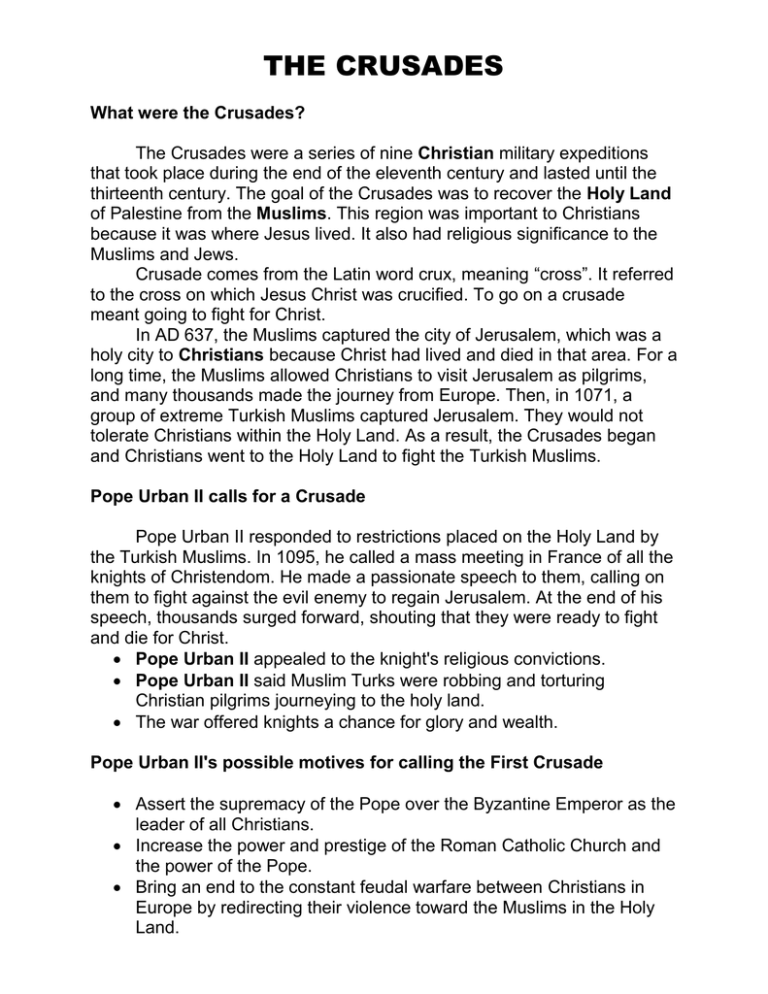
THE CRUSADES What were the Crusades? The Crusades were a series of nine Christian military expeditions that took place during the end of the eleventh century and lasted until the thirteenth century. The goal of the Crusades was to recover the Holy Land of Palestine from the Muslims. This region was important to Christians because it was where Jesus lived. It also had religious significance to the Muslims and Jews. Crusade comes from the Latin word crux, meaning “cross”. It referred to the cross on which Jesus Christ was crucified. To go on a crusade meant going to fight for Christ. In AD 637, the Muslims captured the city of Jerusalem, which was a holy city to Christians because Christ had lived and died in that area. For a long time, the Muslims allowed Christians to visit Jerusalem as pilgrims, and many thousands made the journey from Europe. Then, in 1071, a group of extreme Turkish Muslims captured Jerusalem. They would not tolerate Christians within the Holy Land. As a result, the Crusades began and Christians went to the Holy Land to fight the Turkish Muslims. Pope Urban II calls for a Crusade Pope Urban II responded to restrictions placed on the Holy Land by the Turkish Muslims. In 1095, he called a mass meeting in France of all the knights of Christendom. He made a passionate speech to them, calling on them to fight against the evil enemy to regain Jerusalem. At the end of his speech, thousands surged forward, shouting that they were ready to fight and die for Christ. Pope Urban II appealed to the knight's religious convictions. Pope Urban II said Muslim Turks were robbing and torturing Christian pilgrims journeying to the holy land. The war offered knights a chance for glory and wealth. Pope Urban II's possible motives for calling the First Crusade Assert the supremacy of the Pope over the Byzantine Emperor as the leader of all Christians. Increase the power and prestige of the Roman Catholic Church and the power of the Pope. Bring an end to the constant feudal warfare between Christians in Europe by redirecting their violence toward the Muslims in the Holy Land. Rescue and protect the "Holy Land" – the land associated with the life of Jesus Christ, the major prophet of Christianity. Re-establish safe and unhindered access to the holy city of Jerusalem for the thousands of Christian pilgrims who travel there each year. Keyword: Christendom – all the land in Europe where Christians lived Impact of the Crusades The goal of Christians to capture the Holy Land was not accomplished. As a result, a bitter legacy of religious hatred developed. In the Middle East, Christians and Muslims committed appalling atrocities in the name of religion. Returning Crusaders brought fabrics, spices, and perfumes from the Middle East back to Europe. Trade increased and expanded. The Crusades encouraged the growth of a money economy. To finance the journey to the Holy land, nobles needed money. They therefore allowed peasants to pay rents in money instead of grain and labor. Peasants began to sell their goods in towns to earn money, a practice that helped undermine serfdom. The Crusades increased the power of monarchs. These rulers won new rights to collect taxes to support the Crusades. These conflicts also brought papal power (the Pope’s power) to its height. Contact with the Muslim world led European Christians to realize that millions of people lived in regions they had never known existed. The experiences of crusaders would help expand European horizons and would lead to a new age of exploration. What did Europe gain from contact with the Muslim East? New Farming ideas and animals New goods from the East Knowledge Windmills Mules Donkeys Arab horses Cotton Muslin Damask Figs, plums, apricots, melons, dates Spices Perfume Oils Arabic numbers Decimals Geometry Algebra Medicine Military Science Biology Astronomy Sources: www.schoolhistory.uk and Prentice Hall World History

